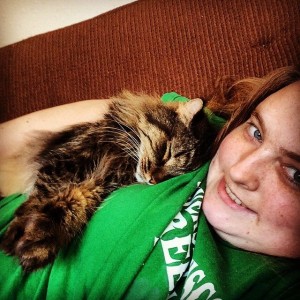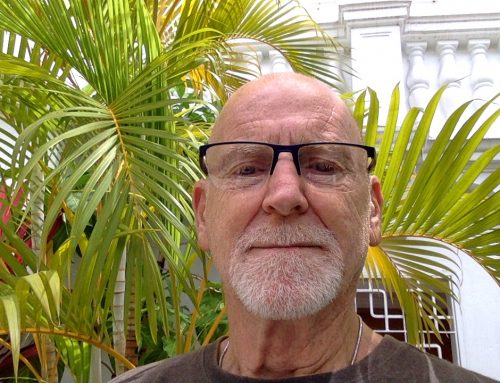Can You Make my Heart Sing?
The psych units at the local hospital had become my second home. I‘ve been admitted so many times, I don’t remember just how many to give an accurate tally. If I had to guess I’d say a few less than 20. I knew I had a hard time coping with emotions and thought I had “standard” depression with PTSD. I couldn’t quite figure out why I wasn’t getting better.
I was an undergrad student attending school to be a social worker. I had begun to learn about the terrible stigma related to the illness that I didn’t know I had been diagnosed with. I learned people with BORDERLINE PERSONALITY DISORDER are manipulative, conniving, energy suckers, two-faced, attention seeking, out of control, boundary pushers, dramatic, liars, demanding, and treatment resistant.
No one ever told me I had the diagnosis of BPD. I found out by accident; I was in the psych unit of one of the hospitals speaking to a very nice nurse who happened to have my chart in the room with us. It was lying open on the table; it’s where I learned of the dirty secret that had been kept from me for years. Diagnosis: cluster B traits (otherwise known as BPD traits), I was immediately furious as I didn’t want to be associated with such negative characteristics. I retreated to my room and withdrew. I couldn’t possibly have such a terrible disorder. After discharge, I requested my medical records from all hospitals I’d frequented and found out they had diagnosed me with full-blown BPD.
The social worker at the hospital I learned of the diagnosis had tried several times to get me to enroll in a group, to which I didn’t understand…DBT (Dialectical Behavior Therapy). I was resistant to this suggestion, as I didn’t have a need for such a group. I had never been explained to about why I needed this group it was just something that would “be good for you”.
Years later, I spoke with my individual therapist regarding the referrals and THE diagnosis that I had discovered. She put me at ease with the BPD diagnosis citing that many people with this diagnosis are from abusive childhoods, such as my own. This disorder, she also included, is how we learned to respond to situations when growing up and have carried into our adult lives. It is NOT about being a bad person, as the stigma would lead one to believe.
By the time I joined the DBT group I had graduated with my Masters of Social Work. I felt out of place for much of the duration of the group for I had the qualifications to run such a group. I even recognized some of the group members as current and former clients, I kept that to myself, as I didn’t want to be booted from the group I’d contemplated going to for years.
For me DBT was a review of what I knew as a social worker. It both angered me and helped me learn to cope with myself in the world. It was an opportunity for me to apply my social work knowledge to myself, though I struggled through the first couple of months of the group thinking that it was all just for “those” people. I didn’t complete the homework as well as I could have and struggled through each 2-hour group. Later, I began embracing the group after a period of acceptance; I even created my own versions of the homework and diary cards. It was at this point I really accepted the BPD diagnosis for myself.
I remained in this particular group for nearly a year until my employer changed insurance companies. I switched to another group that my therapist explained would be people who were higher functioning, such as myself. It wasn’t long that I was in this group before being un-invited. I had gone to the hospital after a fairly major suicide attempt; their rules were firm; if you cannot manage yourself by using the skills taught then you do not belong. Initially I was hurt, I really proved to them that I am “borderline” and was angered that even I could be kicked out of DBT.
This hurt eventually developed into a desire to communicate to the world that people who have BPD are not what the stigma suggests. Since I was working in psychiatric crisis stabilization I heard every day about how “borderline” this person was or how manipulative that person had been the night prior. These comments frustrated me as they were describing “my people”. I confided to a few close co-workers about my BPD diagnosis and asked them to refrain from using these stigmatized words to describe the behaviors that were exhibited.
This experience had become very empowering as one of my co-workers began consulting me on how to manage behaviors displayed by a particularly challenging individual we had at our facility. I eventually developed the courage to tell some of my friends about what I had been dealing with for years. It is one friend that I told I wanted to begin speaking about BPD to reduce the stigma amongst providers. She was very happy to hear about my desires and encouraged me to do just that.
I have not begun any official stigma fighting but this essay is my first step toward such a dream. I can’t wait until the day when providers can read an individual’s diagnosis without rolling their eyes, shouting to other co-workers “she’s borderline”, or sighing a deep sigh of despair because their next client has BPD. One-day providers will just accept that they have a new patient. This will be the day my heart sings with joy for all of us.
* * *
 Susan has her Master’s Degree in Social Work from the University of Wisconsin-Madison. She currently works as a Nursing Assistant at her local hospital. She is also a cat lover extraordinaire!
Susan has her Master’s Degree in Social Work from the University of Wisconsin-Madison. She currently works as a Nursing Assistant at her local hospital. She is also a cat lover extraordinaire!
If you enjoyed this post, please take a few moments to leave a comment or to share with your friends using the little share buttons below!








Leave A Comment